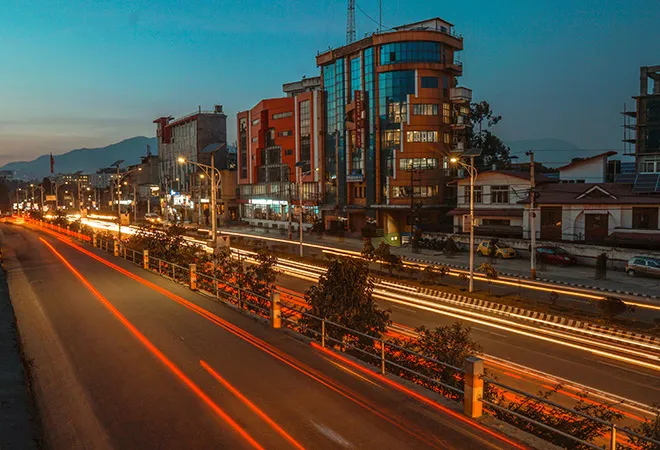
Think cities — how they form, prosper, interconnect, and yield exponential gains on all fronts. There are numerous reasons why cities are created — colonial ambitions; sea-connectivity; part of ancient routes of trades, including slavery; centre for learning; economic growth; sites of administrative and cultural centres; and religious importance. Thus, there are reasons galore why cities are formed but very few on why they disappear at the drop of a hat.
Change in the structure of national and local economy, poor infrastructure, rising pollution levels and lack of physical safety leads to decline of cities at a glacial pace. However, climatic events can cause catastrophe to cities that can render them grounded in minutes. The floods of Mumbai and Chennai, Nepal Earthquake, Uttarakhand floods are few such instances where our cities, many hundreds of years old, became paralysed and inhospitable. Cities are at real risks. By one estimate, every year, around 46 million people in cities are at risk from flooding from storm surges in the East Asia region alone. Many coastal cities, particularly in Asia, are staring at the risk of submersion due to rising sea levels. More than 1,000 people died and 45 million people suffered losses in terms of loss of livelihood, homes, and services in 2017 when severe floods hit south-east Asian cities, including Dhaka, Mumbai and Chennai.
Change in the structure of national and local economy, poor infrastructure, rising pollution levels and lack of physical safety leads to decline of cities at a glacial pace. However, climatic events can cause catastrophe to cities that can render them grounded in minutes.
This makes us ponder why we should care about climate resilience in cities? There are four major reasons for this.
First, for the first time in human history, over 50 per cent of the population is living in cities. The number is only rising and thus, exposing larger share of population to risks due to lack of urban resilience. Any shock to cities will lead to disruption of global value chain, energy supply, mobility and telecommunication, and information exchange.
Second, the cities roughly contribute three-fourths of global GDP. They are drivers of global economy. Cities are the primary carrier of increase in prosperity and standard of living of humans for millennia. Scholar Edward Glaeser’s work ‘Triumph of the City’ establishes how cities have been our greatest invention and how they make us “Richer, Smarter, Greener, Healthier, and Happier.” The climatic shock and complete apathy towards its real risk can considerably set back this forward progress of humankind.
Third, the Sustainable Development Goals 2030 set an ambitious agenda and urban resilience undergirds any prospective success of SDG. Though target 1.5 and 13.1 explicitly highlights the role of resilience, especially for poor and vulnerable people, but it is nobody’s guess that resilience is an integral part across SDGs. For instance, the goal 9.1 on infrastructure, 2.4 on food systems, 11.5 on natural disasters all focus on resilience. Cities are at the epicentre for achieving these SDGs, which links it intricately to resilience.
Fourth, the USD 94 tn worth of infrastructure investments requirement during 2016-2040 will be directed towards urban centers globally. Look at India — gas pipelines, highways, high speed rail, Dedicated Freight Corridors, Bharatmala and Sagarmala, housing, water and sanitation and metro transport systems are all urban focused investments. By one estimate, 70 percent of Indian cities are yet to be built.
There are few initiatives focusing on urban resilience such as 100 Resilient Cities, United Nations efforts on mainstreaming dialogue on the matter and national disaster resilience agencies. Clearly, these noble efforts are still far from making the change required to meet the scale of challenge at hand. The Sendai Framework for Disaster Risk Reduction emphasises the role of disaster resilience infrastructure. Even the Indian Prime Minister Narendra Modi in inaugurating the Asian Ministerial Conference on Disaster Risk Reduction in November 2016, called for launching “Coalition for Disaster Resilient Infrastructure.” These seem to well-intentioned actions but it is time to go bold, holistic and ambitious now.
The Coalition on Urban Resilience should be mooted and championed by emerging nations. The focus of urban resilience is to understand the prospective stresses in the urban centres and devising strategies to cope in case these stresses become shocks. India is one of the most disaster prone countries in the world and it would be wise for India to take a lead on this initiative. India now has the backing of hard power to translate such vision of multilateralism into actual platform as it did with the International Solar Alliance.
The focus of urban resilience is to understand the prospective stresses in the urban centres and devising strategies to cope in case these stresses become shocks.
This Coalition will bring together knowledge exchange so that countries, cities, academia and private sector learn from each other. China is investing in sponge cities, Austin is creating smart grids that can provide energy in the face of natural disaster, Ontario is using low-impact development standards for drinking water and reduced flooding and Netherlands is making room for rivers to prevent flooding. Time is ripe to exchange notes on these initiatives. The other key issues that such platform needs to discuss would be the technical know-how, risk-assessment, financing needs and cost of capital, setting standards, capacity building and establishing procedures for reconstruction and recovery.
The need and desire for urban resilience is firmly established. It is time for actual actions that can save the impending crisis which is already showing early signs. Cities are our bulwark against slipping back in time and urban resilience is a tool to ensure that no discernible harm is done to our cities.
Resilient cities — what would it mean for the cities in the Global South?, September 2018, Oxford Policy Managament.
Resilience in the SDGs: Developing an indicator for Target 1.5 that is fit for purpose, ODI, August 2015.
Six Big Reasons We Focus on Cities, December 2014.
Eight Ways Cities Are Building Climate Resilience, International Institute for Sustainable Development.
The views expressed above belong to the author(s). ORF research and analyses now available on Telegram! Click here to access our curated content — blogs, longforms and interviews.




 PREV
PREV


